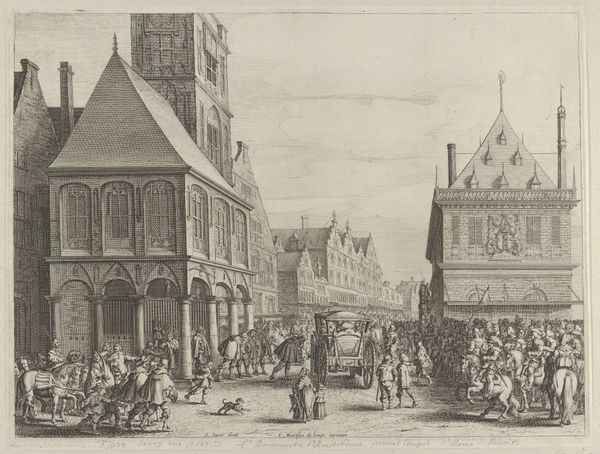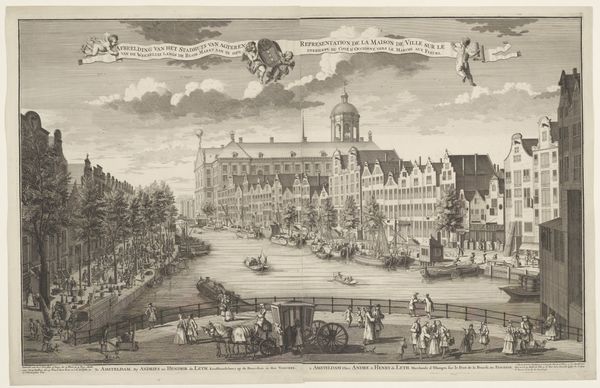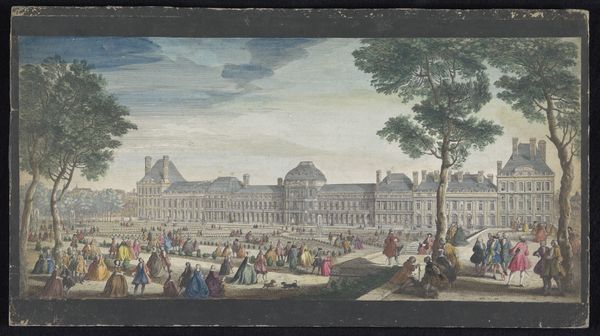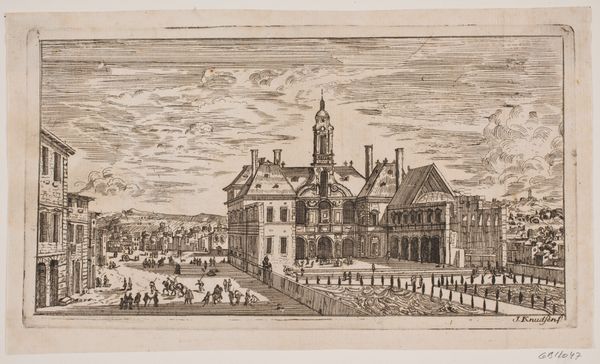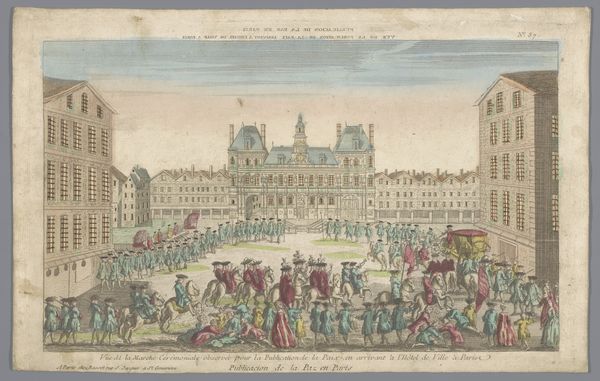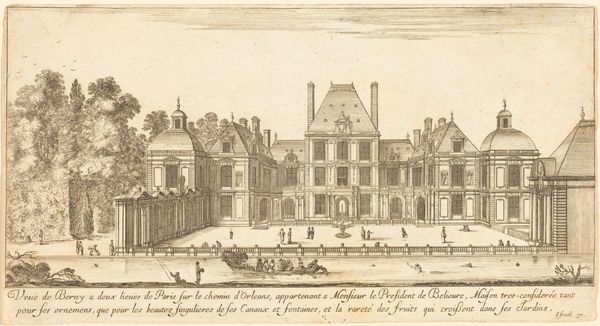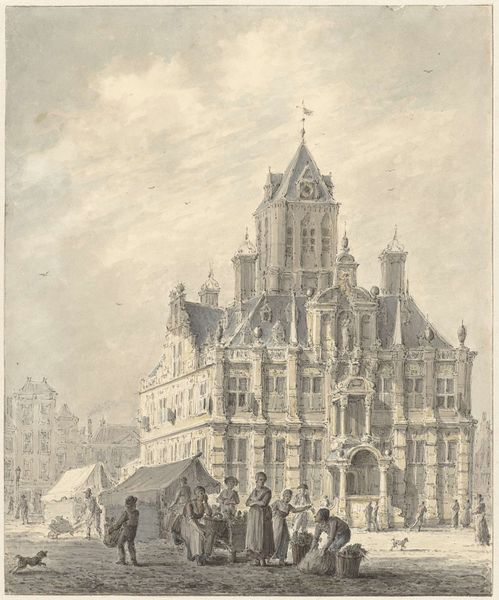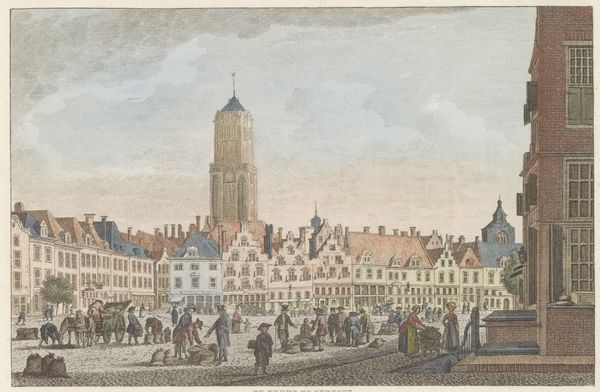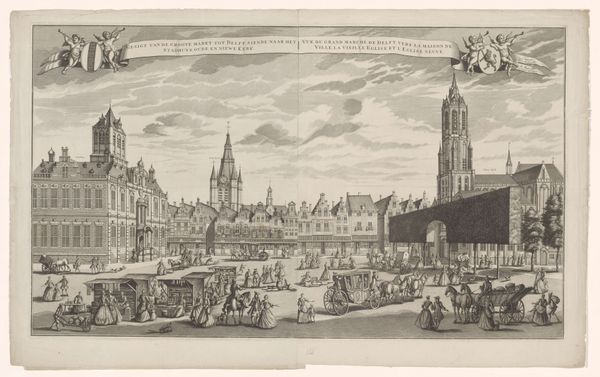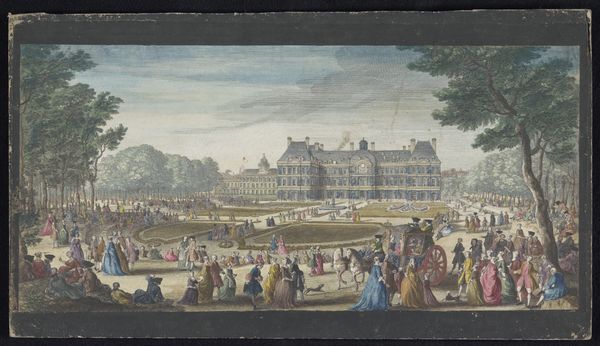
print, watercolor
# print
#
watercolor
#
romanticism
#
cityscape
#
watercolor
Copyright: National Gallery of Art: CC0 1.0
Editor: Here we have Thomas Rowlandson’s “Place de Meir at Antwerp” from 1797, a print with watercolor. I'm immediately struck by the depiction of everyday life bustling within this grand cityscape. The scene is incredibly detailed. How do you see this piece in terms of its representation of labour and society at the time? Curator: It's fascinating to consider Rowlandson’s choices. Notice how the printmaking process allows for multiples, essentially commodifying this scene of Antwerp. Consider the labour involved in the etching, the printing, then the hand-application of watercolor. Rowlandson's print enters a marketplace mirroring the very scene depicted. Who would be buying such images, and why? Editor: That’s a great point. It does seem to commercialize the "everyday". Do you think the details he chose to highlight were designed for a particular audience? Curator: Absolutely. The architecture itself speaks to power, trade, and accumulated wealth materialized into grand buildings. However, the people depicted are mainly vendors. It shows the means of production and social mobility. This creates tension between the solid structures and the transient everyday lives dependent on the urban space. How does that tension manifest visually for you? Editor: I think it is present in how he uses line, the very detailed and architectural ones contrast with the very light and playful renderings of the people and the stalls. It creates this distinction between permanence and...movement. Curator: Precisely. Rowlandson, through the act of reproducing this urban landscape, engages with ideas about place, labour, and the circulation of images themselves. What began as documentation becomes an item of exchange. I think Rowlandson captured something of that commercial and societal shift. Editor: That gives me a lot to think about, especially how the medium itself becomes a commentary on the subject. It is interesting how everyday life becomes a spectacle thanks to production! Thanks a lot.
Comments
No comments
Be the first to comment and join the conversation on the ultimate creative platform.

